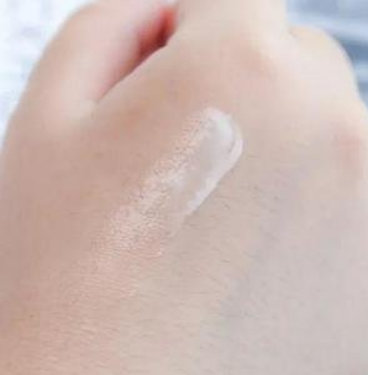1. Introduction
Sodium lauryl sulfate (SLS), also known as sodium dodecyl sulfate or natrium lauryl sulfate, is one of the most widely used surfactants in everything from shampoos to herbicides. But despite its popularity, many people struggle with skin irritation, formulation instability, or poor performance in DIY mixes. If you’ve ever wondered how to use sls sodium lauryl sulfate safely—or whether you should replace it altogether—this guide is for you.

We’ll walk you through practical steps to identify, handle, and substitute SLS, whether you’re crafting natural skincare or boosting your lawn weed killer. Along the way, we’ll clarify confusing terms like anionic and cationic surfactants, and help you choose gentler options like decyl glucoside, coco betaine, or sodium cocoyl isethionate.
2. Understanding Sodium Lauryl Sulfate and Its Role as a Surfactant
First, what is a surfactant? The meaning of surfactant is simple: it’s a compound that lowers surface tension between liquids or between a liquid and a solid. This lets water spread more easily, lift dirt, or help active ingredients stick to plant leaves.
Sodium lauryl sulfate is an anionic surfactant, meaning it carries a negative charge. It’s highly effective at creating foam and cleaning, but it can be harsh on skin and eyes. You’ll often see it labeled as sls sodium, na lauryl sulfate, or lauryl sulfate on ingredient lists.
Don’t confuse it with sodium laureth sulfate (also called sodium lauryl ether sulfate or sodium lauryl ether sulphate). Though similar, SLES is ethoxylated—meaning it’s been treated with ethylene oxide—and is generally milder than SLS.
3. Common Problems with Sodium Lauryl Sulfate—and How to Fix Them
3.1 Skin and Scalp Irritation
Many users report dryness, redness, or itching from products containing sls sulfate. This is especially common in sensitive individuals or when SLS is used at high concentrations (>15%).
- Solution: Reduce SLS concentration to under 5%.
- Blend with amphoteric surfactants like cocamidopropyl betaine (also called coco amido propyl betaine or amidopropyl betaine) to buffer irritation.
- Replace with milder anionic surfactants like sodium lauroyl sarcosinate, lauroyl sarcosinate, or sodium coco sulfate (sometimes labeled as coco sodium sulfate).
3.2 Poor Performance in Hard Water
SLS can form scum or lose effectiveness in hard water due to reactions with calcium and magnesium ions.

- Solution: Add chelating agents like EDTA or use nonionic surfactants like polysorbate 80 or coco glucoside to stabilize the formula.
3.3 Ineffective Herbicide Mixing
Gardeners often add sodium lauryl sulfate as a surfactant for herbicides, but it’s not always the best choice. SLS lacks the spreading and sticking power needed for tough weeds.
- Solution: Use a dedicated surfactant for weed killer, such as methylated seed oil or a nonionic surfactant like ethoxylated alcohol.
- For a lawn wetting agent or wetting agent for grass, consider lignin sulfonate or bio surfactants, which improve water penetration without harming soil microbes.
4. How to Substitute Sodium Lauryl Sulfate Safely
If you’re avoiding SLS due to sensitivity or environmental concerns, plenty of alternatives exist. Here’s how to choose the right one:
4.1 For Gentle Cleansers
Replace SLS with mild, plant-based surfactants:
- Alkyl polyglucoside (e.g., decyl glucoside or coco glucoside): non ionic surfactant, biodegradable, and non-irritating.
- Sodium cocoyl glutamate or sodium lauroyl methyl isethionate: amino acid–based, excellent for sensitive skin.
- Sodium cocoyl isethionate: often used in solid shampoo bars for rich lather without dryness.
4.2 For Foaming Shampoos

Blend sodium laureth (laureth sulphate or sulphate laureth sulfate) with amphoteric co-surfactants like cocamidopropyl for balanced cleansing and foam.
Avoid confusing sls sodium laureth sulfate—it’s a misnomer. SLS and SLES are different chemicals.
4.3 For Agricultural Use
When buying sodium lauryl sulfate for sale for gardening, check if it’s formulated for agrochemical use. Better yet, opt for:
- Nonionic surfactant blends like pluronic 127 or poloxamer 188 for systemic herbicide uptake.
- Span80 (sorbitan monooleate) for oil-based sprays.
- Bio surfactants like rhamnolipids for eco-friendly weed control.
Note: Avoid cationic surfactants like cetyl trimethyl ammonium bromide (CTAB) or cetyltrimethylammonium bromide in herbicide mixes—they can deactivate glyphosate and other common actives.
5. Safety and Sourcing Tips
Always wear gloves when handling pure sodium lauryl sulfate powder—it’s a strong irritant in concentrated form. Store it in a cool, dry place away from oxidizers like copper 1 bromide.
If sourcing from suppliers like Rohit Surfactants Private Limited, verify purity and intended use (cosmetic vs. industrial grade).
Never mix SLS with ammonium-based surfactants like ammonium lauryl sulfate or ammonium dodecyl sulfate unless your formula specifically calls for it—pH imbalances can reduce efficacy.
6. Conclusion
Sodium lauryl sulfate is a powerful but often misunderstood surfactant. While effective, it’s not always the best choice for every application. By understanding its properties, recognizing common issues, and knowing how to substitute it with gentler or more effective alternatives like alkyl polyglucoside, cocamidopropyl betaine, or bio surfactants, you can create safer, more efficient products—whether for your skin or your garden. Always test small batches first, and prioritize compatibility between anionic, cationic, and nonionic ingredients to avoid formulation failures.
Our Website founded on October 17, 2012, is a high-tech enterprise committed to the research and development, production, processing, sales and technical services of ceramic relative materials such as How. Our products includes but not limited to Boron Carbide Ceramic Products, Boron Nitride Ceramic Products, Silicon Carbide Ceramic Products, Silicon Nitride Ceramic Products, Zirconium Dioxide Ceramic Products, etc. If you are interested, please feel free to contact us.


